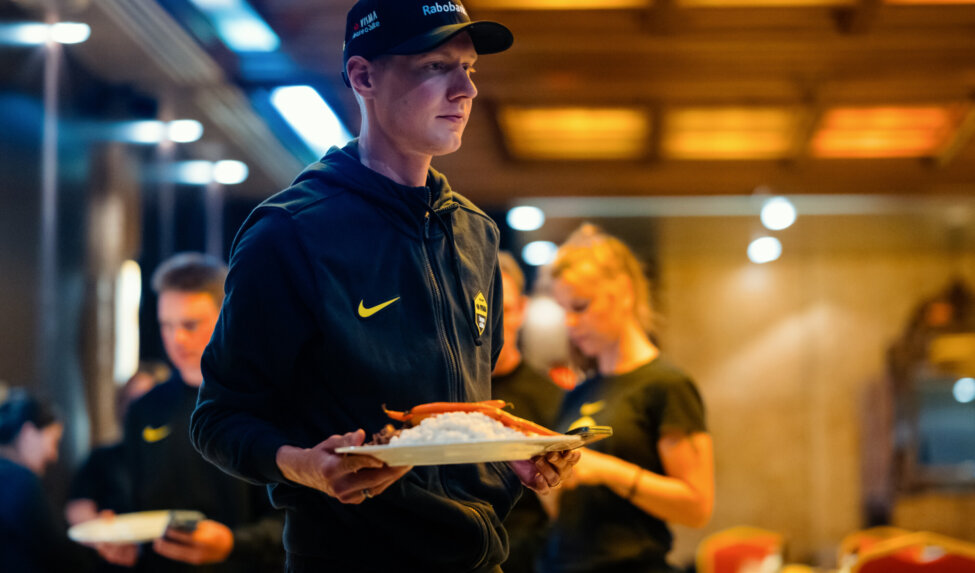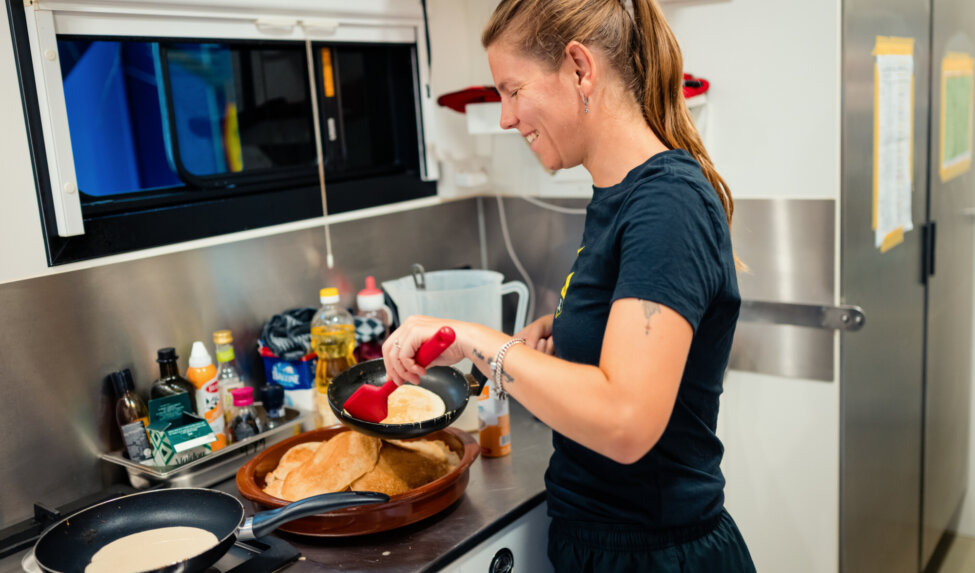Fueling up high: How to eat smart during altitude training
With the spring classics behind them, the team shifts its focus to the grand tours ahead. Altitude training camps are a key part of preparation, offering a powerful physiological boost. But training at elevation doesn’t just challenge the legs, it also demands a shift in how athletes fuel, hydrate, and recover. Whether you're heading to the mountains yourself or are just curious, these insights from The Athlete’s FoodCoach give a better understanding about what happens ‘up in the clouds’.
Surprise! Carbs are still your primary fuel
When oxygen availability is limited, the body turns to its most oxygen-efficient fuel source: carbohydrates. That means athletes need to rely more heavily on carbs not only during training, but also at rest. Glycogen stores are depleted more quickly, so ensuring consistent carbohydrate intake is crucial to maintaining energy levels, supporting recovery, and even protecting the immune system under stress.
- Prioritize complex carbs like oats, pasta, and whole grains.
- Include fast-digesting sources like banana or white bread with jam before training.
- Choose nutrient-dense snacks like granola, dried fruits, nuts, and healthy oils to increase energy availability.
Don’t forget about your proteins
Altitude exposure can accelerate muscle breakdown, especially when combined with increased intense training loads. Protein becomes a critical player in preserving lean mass and supporting recovery.
- Include a quality protein source your meals and snacks.
- Choose lean options like eggs, yogurt, beans, fish, or poultry.
- Spread intake throughout the day to maximize muscle protein synthesis.
Keep on hydrating
Between drier air, increased breathing, and a blunted thirst signal, dehydration sneaks up faster than a rogue descent. Don’t wait until you’re parched!
- Drink regularly, even if you’re not thirsty.
- Add electrolytes to your water to support fluid balance and prevent sodium loss.
- Monitor urine color as a simple hydration check, light yellow is the goal.
Iron up!
One of the body’s key adaptations at altitude is increased red blood cell production. At altitude your body works hard to make more red blood cells to carry oxygen. But this can’t happen efficiently if you’re low on iron.
- Get your ferritin (iron stores) tested 4-6 weeks before altitude exposure
- Focus on iron-rich foods such as red meat, lentils, and spinach.
- Pair iron sources with vitamin C-rich foods (like citrus or bell peppers) to enhance absorption.
- In some cases, a short-term supplement may be recommended but always check with a health professional first!
Protection from within
Acute and chronic exposure to hypoxia at alititude both increase oxidative stress in athletes. This stress can impair immune function, delay recovery, and potentially increase inflammation. Instead of pills, your plate should be your strategy. Whole-food sources of antioxidants boost recovery and support immune health without interfering with your altitude adaptations.
- Emphasize a variety of colorful vegetables and fruits.
- Include nuts, seeds, leafy greens, and berries.
- Avoid high-dose antioxidant supplements, which may blunt adaptation.
Beat the altitude appetite loss
A common side effect of high-altitude training is appetite loss. Yet, energy needs increase, making it crucial to stay proactive with fueling. When eating feels like a chore, think small and frequent.
- Eat small, frequent meals every 2–3 hours.
- Liquid calories are your friend, think smoothies, soups and sports drinks.
- Keep snacks within arm’s reach and try to eat small things even if you're not super hungry. Your body needs the fuel.
Altitude training offers a performance edge, but only when properly supported. Nutrition is not just about eating more; it's about eating smart, with the right timing, balance, and consistency. With the help of The Athlete’s FoodCoach, riders fine-tune their nutrition just as precisely as their training plans. The result? Stronger adaptations, better recovery, and optimized performance when it counts most. Because every meal is a chance to improve!









